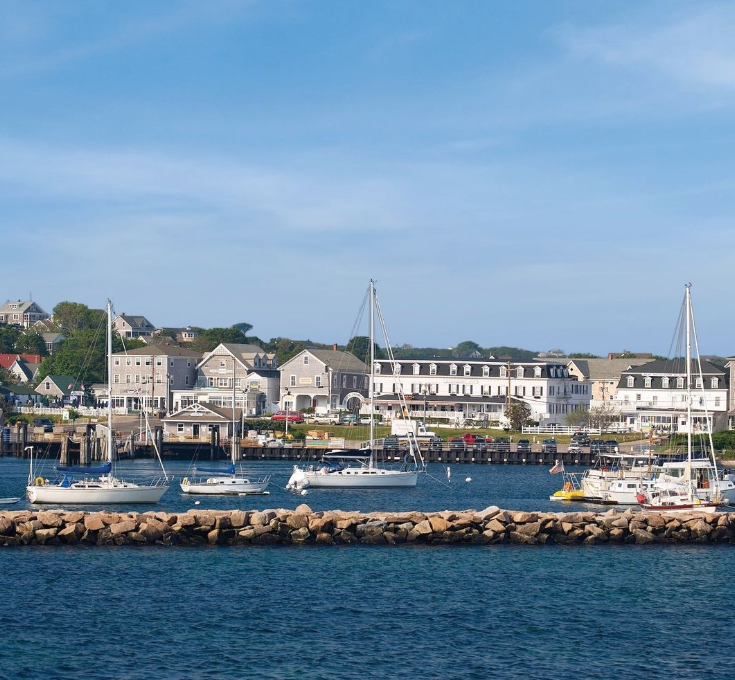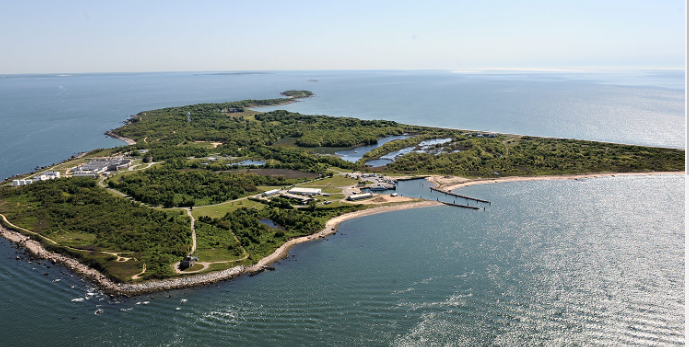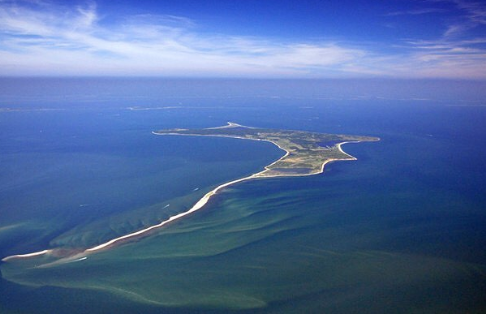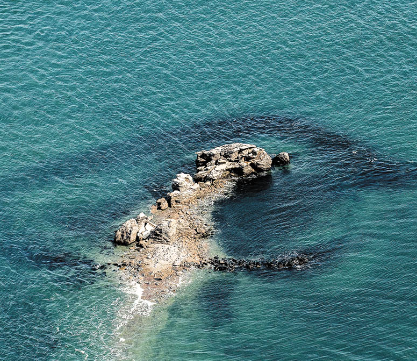3 East End Islands To Visit (And 5 You Can't!)
Lucky To Live On An Island
(and have islands close by)!
You might know that Long Island is the largest and most populous Island in the United States but did you know there are islands just off the east end that you can't visit? Shelter Island, Fishers Island & Block Island are a ferry away. Plus! There are five islands that each have a special history but are not open to the public! Fear not, you may still be able to see them! The Cross Sound Ferry offers Lighthouse Tours which allow you to see many of the islands which you are not able to visit.
Islands You Can Visit
Shelter Island
Shelter Island on the East End between the North & South forks is 27 square miles/8,000 acres. Access to Shelter Island is by North Ferry (Greenport) and South Ferry (North Haven). While the island is small, there is plenty of history as well as places to stay and things to see.
Attractions on Shelter Island include Sylvester Manor Educational Farm, Shelter Island Historical and Mashomack Preserve.
Places to stay include the Pridwin, Sunset Beach, The Chequit and Rams Head Inn.

Fishers Island
Fishers Island, New York, located at the eastern entrance to Long Island Sound and is part of the Town of Southold. It lies approximately two miles off the south-eastern coast of Connecticut opposite Stonington and 30 miles northeast of Orient Point and 40 miles northeast from Sag Harbor. There are no ferries to Fishers Island to or from Long Island, Orient Point, the Hamptons, or Sag Harbor. The only traditional public ferry to Fishers Island runs from New London Connecticut. Regular passenger and auto ferry service connects the Island with New London, CT (45 minute boat ride) while smaller commuter boats run back and forth to Fishers from Noank, CT. You can book a charter boat to reach Fishers Island as well. Yacht Hampton advertises their services for such a journey.
Attraction on Fishers Island include Henry L. Ferguson Museum, Isabella Beach and the Race Rock Lighthouse. One of the major attractions of Fishers Island is golf which is very exclusive.
There are no hotels on Fishers Island.

Block Island
While Block Island is not part of NY - its less than 2 hours by ferry from Montauk or Orient Point (seasonal service) . Walk in any direction: the entire perimeter of the 3-by-7 mile island is virtually lined with beaches, 17 miles worth and all free and open to the public. In the summer season ferries depart daily from Montauk NY as well as Orient Point, NY.
Places to stay include the Avonlea, Jewel of the Sea, Atlantic Inn, Block Island Beach House, National Hotel & Spring House.
Block Island has become popular for The Glass Float Project.

Islands You Cannot Visit
Little Gull Island
Little Gull Island is approximately an acre of land surrounded by rocky reef sitting seven miles off Orient Point. Little Gull Island has a lighthouse. Little Gull Island Light Station (1806) is a five-story, 81-foot conical granite tower with a 19 foot diamter at base and walls 5.5 feet thick on a concrete foundation. The architectural style is Second Empire with distinctive door lintel, cast iron central tower, stairs and watch deck floor. Present tower first constructed and lit in 1869.
Little Gull was sold in 2012 and is now privately owned. The land also serves as extremely important habitat areas for common tern, roseate tern, least tern, and piping plover populations.
How to see it: While public visits to this island rarely occur - you can take a Lighthouse Cruise and see the island from the water.

Great Gull Island
"On the eastern edge of Long Island Sound, a small, rocky piece of land known as Great Gull Island houses the crumbling battlements of a U.S. Army fort and some 11,000 nesting pairs of Common and Roseate Terns. The American Museum of Natural History purchased the island in 1949 to preserve a breeding habitat for terns displaced by increasing development on Long Island’s beaches. The acquisition has proven to be a success, as the remaining Army structures are a nesting tern’s delight."
The American Museum of Natural History along with the Linnaean Society continue the work of conservation to this day. Today, Great Gull Island hosts in the largest nesting colony of Common Terns in the world and the largest nesting colony of Roseate Terns in the western hemisphere.
Prior History of Great Gull: In 1897 with tensions rising with Spain, the U.S. Army took possession of Great Gull and began building coastal fortifications. As construction and human activity escalated, the terns were forced to abandon the island. The thriving tern colony had been plagued by the introduction of people in years prior. Fort Michie was built and ultimately deemed a surplus asset after the end of WWII.
How to see it : Visits to Great Gull for the public would not be permissable due to the conservation efforts made on behalf of the avian species that call Great Gull home. However it can be seen when taking a Lighthouse Cruise.

Plum Island
Located in Long Island Sound between Connecticut and New York, Plum Island is historically Algonquin territory. In the 19th century, it became home to a lighthouse and an Army post. In 1914, it was the site of an infamous court martial, and since the 1950s it has hosted a federal laboratory conducting classified research on contagious animal diseases, especially foot and mouth disease.
Today, the ownership of the Island is still in the hands of the Federal Government with talks of the island being sold. The Nature Conservancy and Save the Sound among other are trying to keep the island and its natural setting from development while ultimately allowing for some public access for those to appreciate nature as well as the islands history.
Plum Island is also home to the Plum Island Lighthouse and Fort Terry.
Prior History of Plum Island: Plum Island was the site of the first battle between British and colonial troops during the Revolutionary War. Under orders from George Washington, General David Wooster and his troops went ashore near the present site of the lighthouse in 1775 with the goal of preventing livestock raids by the British. The British troops garrisoned on the island fired on them, and the colonial troops were forced to retreat across the water back to Oyster Ponds (known today as Orient Point).
How to see it: Plum Island is not open to the public. It can be seen when taking a lighthouse tour.

Robins Island
The privately owned 437-acre island has passed through many hands over the centuries. But it’s only been the past quarter century that the preservation of the “jewel of the Peconic” has been a certainty. The Nature Conservancy, a global conservation nonprofit, entered a conservation easement with island owner Louis Bacon in 1997. There are several at-risk species observed on the island, such as the endangered piping plover, threatened least tern and common tern and the rare seabeach knotweed. Nesting osprey pairs also successfully raised chicks on the island.
Prior History of Robins Island: The island was once owned by the ardent loyalist, and former Town Supervisor Parker Wickham. At the conclusion of the American Revolution, Wickham was the only loyalist in Southold to lose his property including Robbins Island by an act of the New York Legislature, for siding with the British during the war.
How to see it: Robins Island is privately owned and therefore not open to the public. Robins Island can be seen quite clearly from New Suffolk where you can dine at Minnow at the Galley Ho or Legends.

Gardiner's Island
Approximately five square miles in size, Gardiner’s Island, a part of the town of East Hampton, has a rich, tumultuous history that spans nearly 400 years of ownership by the same family. It is the only real estate intact in the United States that is part of an original royal grant from the English Crown.
Incredible History on Gardiner's Island: In June 1699, Gardiner’s Island received a legendary visitor, Captain William Kidd, privateer and pirate. He sailed his ship Adventure Prize into one of the harbors on the Island on his way to Boston where he would attempt to clear his name. With Lion Gardiner’s grandson Jonathan’s permission, he buried $30,000 worth of treasure in a ravine between Bostwick’s Point and the Manor House.
How to see it: It is the oldest and largest privately owned island in the country, a 3,318-acre mass between Long Island's North and South Forks that is completely inaccessible to outsiders. Best seen by boat or air. Watch the documentary short film "The End" to learn about the intriguing owners and history.

Notable Mention: "The Ruins" aka Gardiner's Point Island
Gardiner's Point Island now known as "The Ruins" was home to a lighthouse and then Fort Tyler which was never used for it's intended purpose during the Spanish American War. The Fort was used as a bombing target despite multiple efforts to conserve the island for its ecology and bird life. Today nothing but "ruins" remain.
How to see it: The Ruins can be visible when taking a lighthouse tour.




